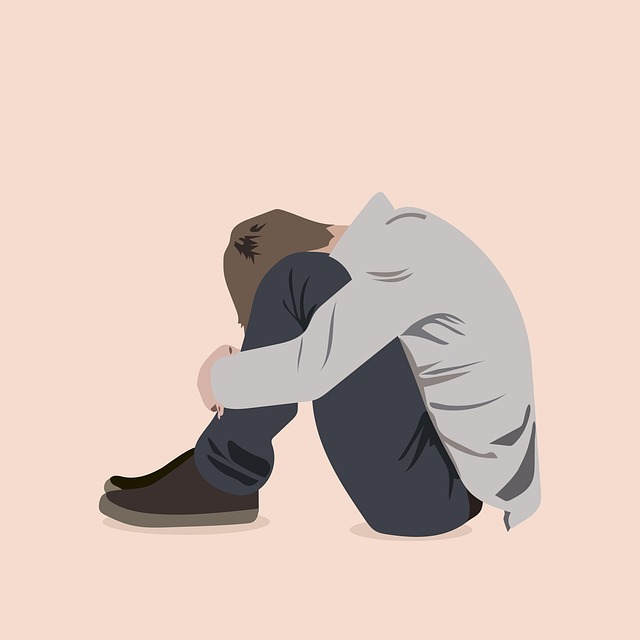Therapists-clinicians must master risk assessment through meticulous evaluation of potential hazards and their harm likelihood, adhering to Mind Over Matter Principles. This involves considering client demographics, existing conditions, treatment methods, and external factors like Community Outreach Program Implementation. Risks are categorized and mitigated proactively through tailored interventions. Effective harm minimization planning focuses on preventive measures, enhancing client safety throughout therapy journeys. Golden Therapy for Therapists-Clinicians combines tailored mental wellness journaling, trauma support, and emotional well-being promotion to create a supportive environment, fostering successful outcomes. Regularly reviewing and updating risk assessment plans is crucial for aligning strategies with evolving standards and promoting proactive safety management in mental healthcare practices.
Risk assessment and harm minimization planning are essential components of safe therapeutic practice, ensuring the well-being of both clients and therapists. This comprehensive guide explores the critical process of understanding risk assessment as a cornerstone of clinical safety. We delve into identifying and evaluating risks in diverse settings, providing practical strategies for therapists to implement harm-minimization plans. Through real-world case studies, we showcase successful risk management in therapy, emphasizing continuous improvement through regular plan reviews. Equip yourself with these vital tools for Golden Therapy—for clinicians dedicated to delivering exceptional care.
- Understanding Risk Assessment: A Cornerstone of Safe Practice
- Identifying and Evaluating Risks in Clinical Settings
- Implementing Harm Minimization Strategies: Practical Steps for Therapists
- Case Studies: Successful Risk Management in Therapy
- Continuous Improvement: Regularly Reviewing and Updating Risk Plans
Understanding Risk Assessment: A Cornerstone of Safe Practice

Understanding risk assessment is a cornerstone of safe practice for therapists-clinicians. It involves meticulously evaluating potential hazards and their likelihood to cause harm, enabling professionals to implement effective harm minimization strategies. By embracing the Mind Over Matter Principles, practitioners can transform challenges into opportunities, ensuring a nurturing environment that fosters both healing and growth.
A robust risk assessment process encompasses identifying risks within the therapy setting, considering client demographics, existing conditions, and treatment methods. This includes evaluating external factors, such as those associated with a Community Outreach Program Implementation. Once identified, risks are categorized based on severity and probability, guiding the development of tailored interventions to mitigate potential harms. Effective harm minimization planning is not merely reactive but proactive, focusing on preventive measures and enhancing overall client safety throughout therapy journeys.
Identifying and Evaluating Risks in Clinical Settings

Identifying risks is a fundamental step in ensuring safe and effective therapy practices for both therapists and clients. In clinical settings, risks can arise from various factors, including client history, treatment methods, and environmental considerations. Therapists must conduct thorough assessments to uncover potential hazards that could impact client outcomes and their own professional well-being. This process involves reviewing medical records, understanding past traumas or chronic conditions, and evaluating the therapeutic environment for any triggers or obstacles.
By implementing robust risk assessment strategies, therapists can tailor their approach to cater to individual needs. For instance, recognizing the potential risks associated with specific Golden Therapy techniques allows clinicians to offer personalized care, thereby enhancing mental wellness and emotional well-being promotion techniques. Moreover, this proactive approach informs the development of tailored Mental Wellness Coaching Programs, ensuring that both therapist and client are prepared to navigate any challenges that may arise during treatment, ultimately fostering a safer and more supportive therapeutic space.
Implementing Harm Minimization Strategies: Practical Steps for Therapists

Implementing harm minimization strategies is a pivotal aspect of Golden Therapy for Therapists-Clinicians, aiming to foster a safe and supportive environment for clients. The process begins with identifying potential risks and triggers unique to each client’s journey. By understanding their past traumas, current stressors, and emotional vulnerabilities, therapists can tailor interventions that promote inner strength development. This proactive approach involves teaching conflict resolution techniques and providing tools for effective coping mechanisms, enabling individuals to navigate challenges with resilience.
Practical steps include integrating evidence-based practices such as cognitive behavioral therapy (CBT) to challenge negative thought patterns and emotions. Additionally, incorporating mindfulness exercises and emotional healing processes can significantly enhance a client’s ability to manage distressing situations. Therapists should also encourage open communication, ensuring clients feel empowered to express their needs and concerns, thereby fostering a collaborative relationship that prioritizes their well-being.
Case Studies: Successful Risk Management in Therapy

Case studies offer valuable insights into successful risk management within the therapy field. One notable example is the implementation of Golden Therapy for Therapists and Clinicians, which focuses on fostering a supportive environment for both practitioners and clients. This approach involves tailored mental wellness journaling exercises to promote self-reflection and emotional well-being, creating a safe space to explore complex issues. By integrating trauma support services and incorporating specific emotional well-being promotion techniques, therapists can effectively manage risks and enhance their practice.
Additionally, these case studies demonstrate how structured guidance can help therapists navigate challenging scenarios seamlessly. This proactive approach not only ensures client safety but also enhances the overall therapeutic experience. Through such innovative practices, therapists can provide high-quality care while minimizing potential harms, ultimately contributing to successful outcomes in clinician therapy.
Continuous Improvement: Regularly Reviewing and Updating Risk Plans

In the dynamic landscape of healthcare, particularly within the realm of therapist-clinician practices, continuous improvement is the golden therapy for sustained success and patient well-being. Regularly reviewing and updating risk assessment plans is not just a best practice; it’s an essential component of high-quality care. This ongoing process ensures that strategies to identify, mitigate, and prevent potential harms remain relevant, effective, and aligned with evolving standards and emerging challenges. By adopting this approach, therapists and clinicians can foster a culture of proactive safety management, enhancing the quality and consistency of services provided.
Integrating public awareness campaigns development, community outreach program implementation, and mental health education programs design into these reviews can further strengthen risk minimization efforts. Such initiatives not only enhance public understanding of mental health issues but also equip individuals with coping strategies, fostering a supportive environment where risks can be better managed. This holistic view of harm minimization planning is pivotal in the pursuit of optimal patient outcomes and the advancement of mental healthcare practices.
Risk assessment and harm minimization planning are essential components of golden therapy for therapists and clinicians. By understanding the importance of these practices, identifying potential risks in clinical settings, and implementing practical strategies, professionals can ensure a safe environment for their clients. The case studies presented demonstrate successful risk management, highlighting the value of continuous improvement through regular review and updating of risk plans. Embracing these principles not only minimizes harm but also fosters a culture of excellence in therapy, ultimately enhancing client outcomes.














